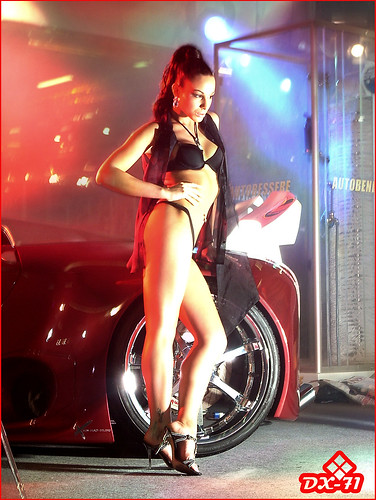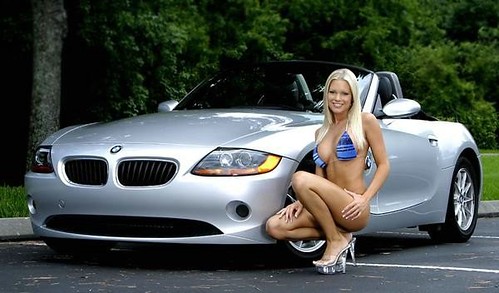As advertised on the Car and Classic website.
Quoting the seller: "Norton International Model 40, racing specification, delivered in 1932 to Hans Soenius from Cologne. He then was the best the best German road racer and he raced the bike in 1932 and 1933 before he joined NSU as a works rider. Matching frame (46538) and engine numbers (1594). The frame was modified to rear suspension at one point. The black and white photo above shows Hans Soenius on this Inter in 1933. Priced at 15.700 GBP"
and another one from the same seller: "Norton International, Model 40, engine no.1596, sold in 1932 to C.J.Hands from Birmingham in racing specification. The frame is not original and probably left the works part of a CJ, CS1 or ES2. The girder fork is correct for 1932. Front brake with cooling rings, drum is original. Priced at 12.400 GBP"
Both bikes are in the Czech Republic.
|
|
|---|
|
|
|---|
Wednesday, September 29, 2010
Bennett's 1925 TT Norton again
By Roger
I have found a picture (above) of Bennett and his Norton at the end of the 1925 TT which shows the braced Webbs that he used in the race. I wanted to confirm that he did use the braced ones as I had read elsewhere that they were so still that they caused frame breakages on the sidecar outfits. I am most interested in the design as the brace appears to be in line with the fork's front tube rather than midway between as on the Druids. I think that the 1925 TT was the first time that braced Webbs were used and this may also be true for the Druids because of comments in The Motor Cycle; developments tended to be "shared".
I have found a picture (above) of Bennett and his Norton at the end of the 1925 TT which shows the braced Webbs that he used in the race. I wanted to confirm that he did use the braced ones as I had read elsewhere that they were so still that they caused frame breakages on the sidecar outfits. I am most interested in the design as the brace appears to be in line with the fork's front tube rather than midway between as on the Druids. I think that the 1925 TT was the first time that braced Webbs were used and this may also be true for the Druids because of comments in The Motor Cycle; developments tended to be "shared".
Labels:
-Flat Tank models,
-People,
1925,
Model 25
Tuesday, September 28, 2010
Max's 1931 Model 20 Norton
An email from Mike Slater
"Thought you might be interested in this pic; this is my great uncle Max's bike, pictured in 1939 (at least the license plate makes it pretty easy to date the photo). I don't really know much about the bike, apart from the fact that it seems to be a Model 20, with what looks like an aftermarket suicide shifter fitted and the tool box removed."
JdK: It's a 1931 Model 20 Norton. Note the twinport exhaust, the position of the magdyno behind the cylinder, the Enfield hub at rear, the Horton hub at front and the early Norton forks (without the typical Webb wing nuts). An interesting feature is the instrument panel mounted on the front forks. The gearbox lever for the Sturmey Archer box is original, as is most of the rest of the bike.
Monday, September 27, 2010
It's a Gale indicator!
By Roger
Here is an answer to the question posed in the blog on 29 June. Despite the detailed description I am still not quite sure why it would be needed. Normally indicator diagrams are used to determine power output but this one seems to require a dynamometer to verify it! At least we know what it is and that once again I have proved to be wrong - my motto is: often in error but never in doubt. The other snippets are also of interest as they show that in 1926 crash helmet design was quite advanced and chromium plating was being advocated.
JdK"...I still don't know what this thing does exactly!"
Labels:
-Miscellaneous
Thursday, September 23, 2010
Viktor's 1927 Model 18 Norton
Viktor (above) got this Model 18 from his very good friend Vratislav (below, on the right) but it took him 10 years to persuade his friend to part with the Norton's remains! He had to help him out reproducing quite a few parts for Vratislav's other bikes before he could carry the Norton project home.
Viktor has now dismantled the engine and surprisingly, it looks in quite good shape still. The head is marked 29-1-27 and the engine number is 35036 which confirms 1927.
Rebuilding the frame will be the biggest challenge but Viktor is making progress, see this earlier blog entry for more info.
Labels:
-Flat Tank models,
1927,
Model 18
Wednesday, September 22, 2010
Improvements in the valve mechanism of internal combustion engines
A patent application written by James Lansdowne Norton in 1919. It describes a balance lever and valve springs at the position where you’ll normally find the pushrod check springs on your vintage OHV Norton. In the invention, opening of one valve puts more pressure on the other valve resulting in that valve to seat more strongly. A further benefit as described is that the valve springs would be remote from the heat of the cylinder head, in a period when valve springs were still prone to break.
Does it work? Perhaps, but problems with valve springs were overcome by use of better materials and longer springs and further, the construction looks rather complex to me compared to the normal setup. It would be interesting if someone could give it a try though!
Labels:
-Technical
Tuesday, September 21, 2010
Removing the pinion from the crankshaft
How to remove the pinion from the crankshaft of your vintage Norton? It's a tapered press-fit and there is not enough room behind the pinion to use a normal puller. Clumsy attempts to use the weight of the crankshaft invariably result in cracking of the thin wall between the bearing and the pinion. The Norton manual suggests to give the pinion an almigthy blow with a hammer and a soft metal drift...which works OK but I need a stiff drink before I dare to abuse the delicate pinion in that manner.
Viktor found a much better way and the pics below explain it all. The puller was made from grained steel grade 600 MPa.
Labels:
-Technical
Monday, September 20, 2010
As promised, here are the photos from the Kiss concert.
This is only 22 of over 80 some pictures, but I picked some of the coolest to share with you.
As KISS proclaims to be the greatest band on earth, they clearly put on one of the greatest shows on earth.
Wow, What a Trip!
From her on out, I'm just gonna let the pictures do the talking on this one.
Enjoy.



























As KISS proclaims to be the greatest band on earth, they clearly put on one of the greatest shows on earth.
Wow, What a Trip!
From her on out, I'm just gonna let the pictures do the talking on this one.
Enjoy.



























Labels:
KISS
Sunday, September 19, 2010
R J D Burnie's Nortons
Pics sent by Steven, words by Simon
Steve: "This is my grandfather R J D Burnie (in the pictures) and most of these photos were taken at Pendine as this is where he was from... but he did also race at Oxwich, Brighton, Southport, Shelsley Walsh, Ulster and others... he was the chief accountant at Fort Dunlop and raced purely for fun. I have two scrap albums of his with newspaper cuttings from the thirties and fourties which is where I have managed to get most of my info from and then in '47 he get tranferred to Durban as internal auditor in a new Dunlop factory. Before leaving he was one of the most successful amatuer racers of his time..."
Simon: "Some pics were obviously taken at Sand events and some seem to be road races but just where I do not know. It is not easy to be too sure about which models are which from the action photos. However, both bikes in the top photo are from 1928/9. The one on the right is an ES2 model and the one on the left may be an ES2 or a CS1 (they looked the same from the drive side!). I would think the photo was taken two or three years later - perhaps in the early thirties - as the front brake lever on the r/h bike has been changed to a later design.
The machine with telescopic forks and plunger rear suspension is a post war Manx Norton - as sold to the general public in the period up to the early fifties when the featherbed framed models came into the picture.
The machine with riding number 31 looks to be a just pre-war CS1 model - note full chain case over the primary chain and detachable front brake drum on left hand, while I think the other shots are all of the same machine (riding numbers 1,15,23 and 45) and this looks like a Model 30 (the 490 cc OHC racing model) from about 1933/4."
The V-twin is a New Imperial
Labels:
-People,
1928,
Model 30,
Model CS1 (Carroll),
Model ES2,
Model Manx
Subscribe to:
Comments (Atom)












































